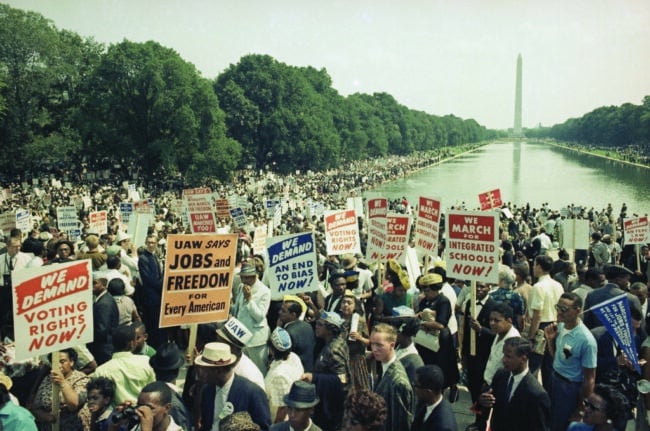
People gather at the Washington Monument and around the reflecting pool for the March on Washington for Jobs and Freedom on August 28, 1963 in Washington, D.C. Source: AP
By Jessica Lovaas and Adam Sanchez
Given the textbook treatment of the March on Washington and the Civil Rights Movement more generally, it was no surprise that when we asked our students at Harvest Collegiate High School, a public school in New York City, “Where did the Civil Rights Movement take place?” they slowly rattled off Southern states: “Alabama,” “Mississippi,” “North Carolina.” Our students had no sense that the movement also took place in the city in which they had grown up. Without the North as part of their civil rights story, students sympathized with the Southern movement, but found it hard to put themselves in activists’ shoes and struggled to see the relevance of the Civil Rights Movement for fighting the racism they see and live with in New York City today.
As we brainstormed how to broaden our civil rights curriculum, we began reading more about the movement in the North and West. In particular, Jeanne Theoharis’ A More Beautiful and Terrible History: The Uses and Misuses of the Civil Rights Movement had a big impact on our thinking. We became determined to develop lessons that would help students rethink the narratives they had learned and make relevant connections to today. We decided to write a role play about the March on Washington that shifted the gaze from the leaders on the stage to the marchers in the streets. Poring over dozens of books, and venturing to the Schomburg Library to sift through several primary accounts, we found our own knowledge of the march and regional civil rights struggles expanding.
Although not part of the official march demands, many protestors carried signs demanding “an end to police brutality now!”
Rather than a singular and celebratory focus on the Civil Rights Act of 1964 as the rallying cry and outcome of the march, we wanted to focus on the local struggles that made the march possible: the challenges and victories organizers from around the country faced in the years leading up to the march. We wanted students to think deeply and personally about what motivated individuals, old and young alike, to travel, sometimes thousands of miles, to attend.
We selected five case studies — Los Angeles; Birmingham, Alabama; Brooklyn; Detroit; and Cambridge, Maryland — to introduce our students to the diverse struggles across the United States. Aaron Broudo, a teacher at Fannie Lou Hamer Freedom High School in the Bronx, crafted an additional case study about McComb, Mississippi. One of the best parts about studying the March on Washington from the perspective of the marchers is it allows teachers and students to investigate their local history, as people came to the March from all over the country.
When Adam moved to Philadelphia the summer after we debuted this role play in our classrooms, he created additional case studies for Philadelphia and Albany, Georgia. When selecting the initial roles, we chose locations in both the North and the South, as well as the West, to help students better understand the movement as a nationwide struggle against white supremacy. We also tried to highlight the role of women activists who were often at the center of local organizing, but almost entirely absent from the stage at the march. Continue reading and access lesson.

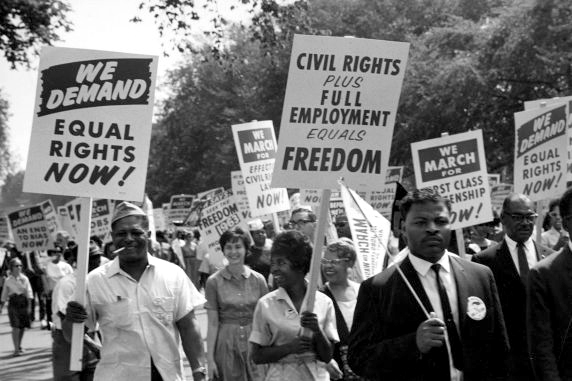
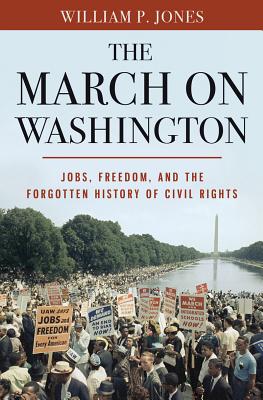

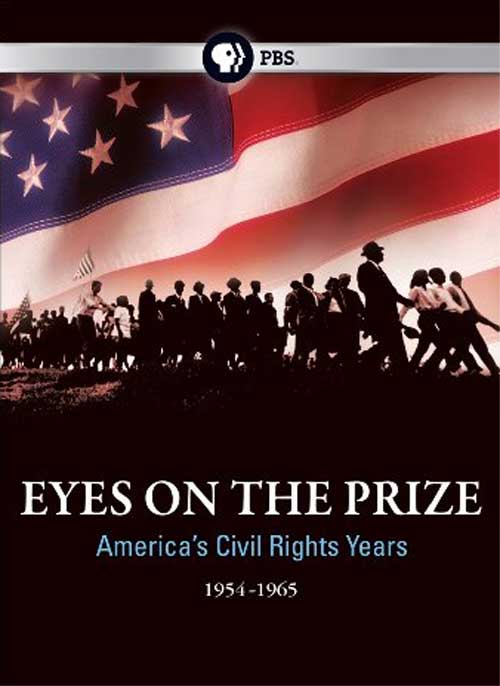
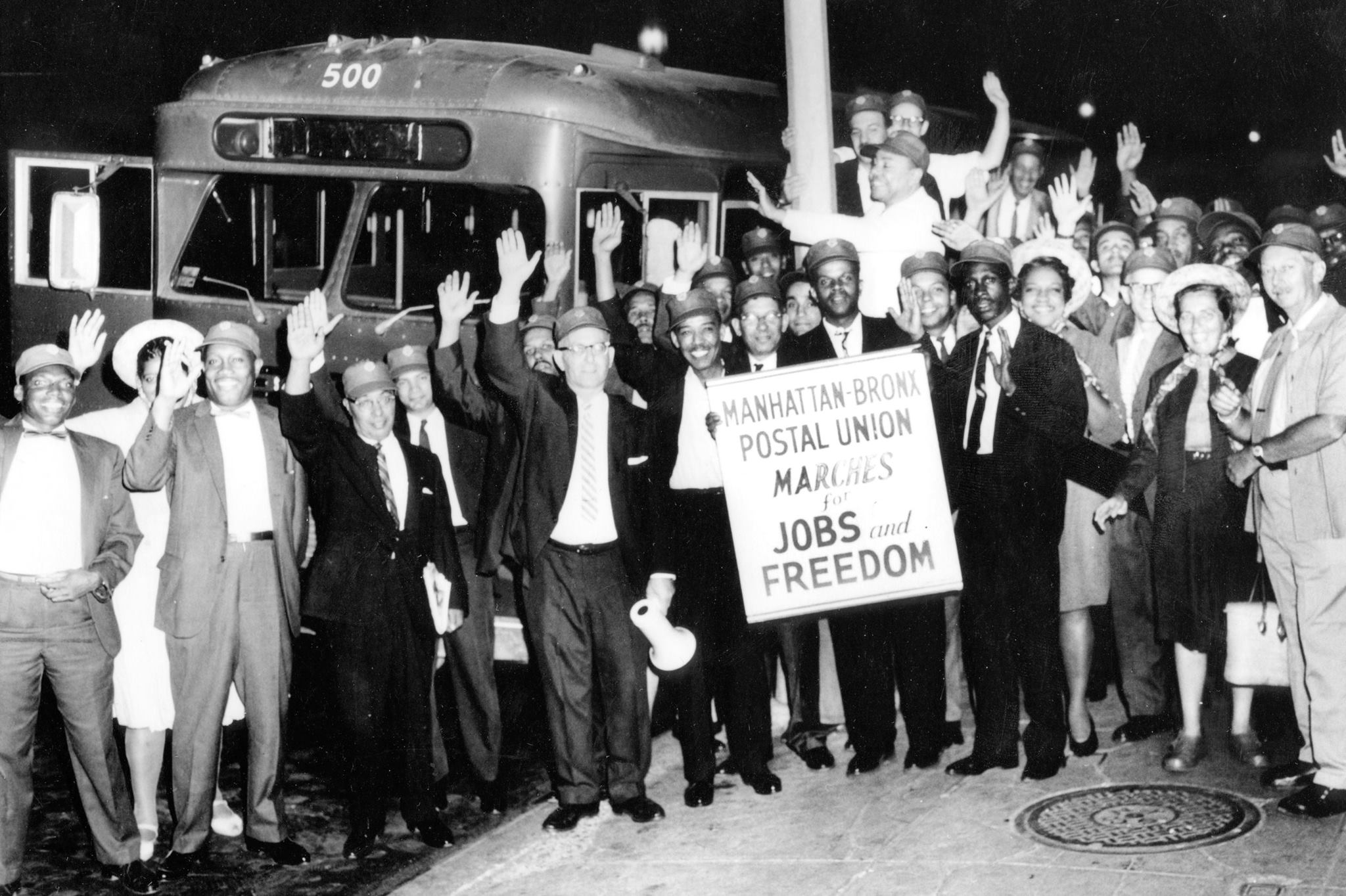






Twitter
Google plus
LinkedIn